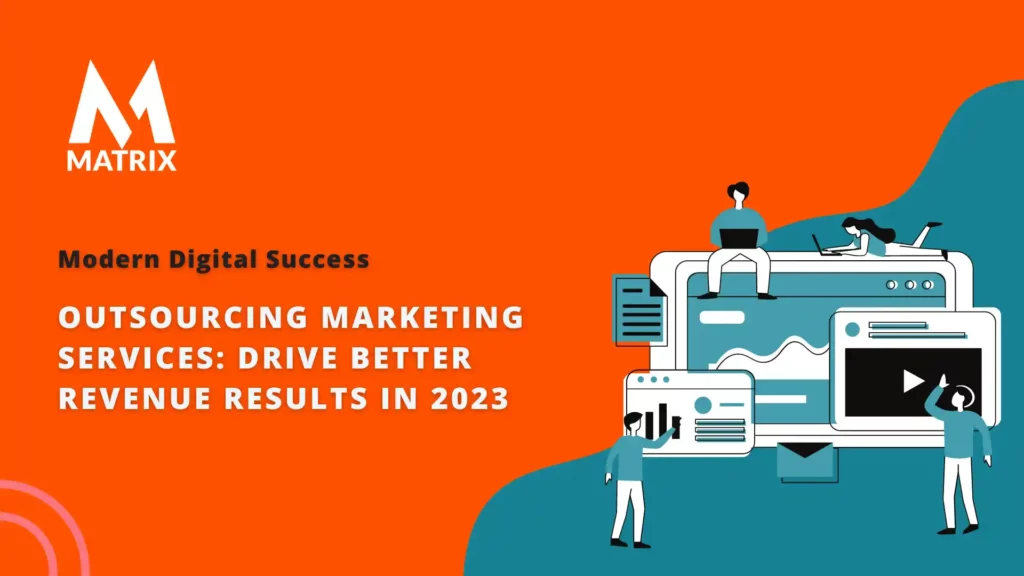Learn how to create a go-to-market strategy to re-launch or new product launches.
You need to plan your messaging before you start developing your go-to-market strategy so that the message is cohesive across all platforms.
Your Go-to-Market Strategy is like planning your first overseas vacation. You know where you want to go and must figure out how to get there.
It’s important to consider what you want the customer to know and what they will come in contact with when they first hear or see your product.
These are just some of the many things you should consider when creating a go-to-market strategy!
Introduction to a go-to-market strategy

The go-to-market strategy is the process of planning and executing the launch and ongoing marketing, sales, and distribution of a product.
Companies use go-to-market strategies to drive revenue from new products or services through multiple channels. You must have a cohesive message across all platforms so your customers understand what your company does.
You need to think about where people will hear about your company first, how they’ll find out more information, and what types of things they’ll see when using your product or service for the first time.
This article will teach you how to create a go-to-market strategy!
2. What is a go-to-market strategy?
A go-to-market plan is the process of planning and executing the launch and ongoing marketing, sales, and distribution of a product.
Companies use go-to-market strategies to drive revenue from new products or services through multiple channels.
You must have a cohesive message across all platforms so your customers understand what your company does.
You need to think about where people will hear about your company first, how they’ll find out more information, and what types of things they’ll see when using your product or service for the first time.
This article will teach you how to create a go-to-market strategy!
What Is the Purpose of a Go-to-Market Strategy?
The purpose of the Go-To-Market Strategy is to Inform, Persuade, and Differentiate.
The go-to-marketing plan aims to inform the public, help them decide which products are best for them, and persuade them to try your product. A go-to-market strategy also does several other things you may not think of right away.
Why is it important to have a go-to-market strategy?

The go-to-market strategy is important because it will determine any company’s sales. Go-to-market planning is vital for any entrepreneur who wants to be successful in their business.
A good go-to-market strategy that includes strong messaging and branding can help increase a business’s sales while also controlling costs on items like overheads and staff wages.
With solid go-to-market planning in place, not only will you get your product heard by potential customers, but you’ll keep your costs low! Now that sounds like an alternative worth considering!
It’s crucial to consider good go-to-market (GTM) when beginning any entrepreneurship venture – no matter the operation’s size.
GTM helps with the overall marketing strategy and will ultimately help increase a business’s sales. Go-to-market planning is important because it requires the entrepreneur to plan to get their product or service heard by potential customers.
Go-to-market has big implications on things like overheads and staff wages, so this is why GTM is an important area that needs to be handled with care.
What should you consider when creating your go-to-market strategy?

There are several things that you need to take into consideration when you’re creating your go-to-market strategy.
These include:
- Your target audience
- Messaging for your product
- The channels used to deliver messages
- Elements incorporated into your product Go-to-market is all about getting the customer’s attention with your message.
Go-to-market should be considered a four-dimensional field; it has its unique environment, which you need to understand and develop a strategy for before proceeding further.
This is important because GTM should incorporate everything you need to get potential customers and clients interested and involved in your product or service.
GTM needs to consider what message you want your target audience to receive and how this information will be delivered.
The go-to-market plan also involves different elements, such as providing incentives for those who are up early and developing business relationships with others to get your GTM and brand spread further.
You need to define your sales funnel, and here is a great tool for that.
If you’re looking for Go-to-market planning, here’s a quick overview of what that entails:
- Go-to-market strategy should be thought about when starting any entrepreneurship venture – no matter the size of the operation. GTM helps with the overall marketing strategy and will ultimately help increase a business’s sales.
- Go-to-market has big implications on things like overheads and staff wages.
- Go-to marketing plan should consider what message you want your target audience to receive and how this information will be delivered.
- GTM plan also involves different elements, such as providing incentives for early adopters.
Go-to-market planning is all about getting customers’ attention with your message,
Go-To Marketing Strategy (GTM) should be considered a four-dimensional field; it has its unique environment, which you need to understand and develop a strategy for before proceeding further.
Let’s have a closer look at each point:
- Your target audience
- Messaging for your product
- The channels used to deliver messages
- Elements incorporated into your product GTM are all about getting the customer’s attention with your message.
When should you create your go-to-market strategy?
This is a good question, but the answer to when you should create your Go-To Marketing Strategy (GTM) is when you are ready!
What does that mean? It depends on the Go-To Marketing Strategy (GTM) development stage you are in. The go-to-market strategy should be thought about when starting an entrepreneurship venture.
When you first start thinking about go-to-market planning, the stage you are in is really important, and it all depends on where you are with your product and development.
How do you create your go-to-market strategy?
The first key to a successful go-to-market strategy is to think about what you want the customer to know and what they will come in contact with when they first hear or see your product.
Once you’ve identified those things, it’s time to develop your go-to-market strategy.
You need to plan your messaging before you start developing your go-to-market strategy so that the message is cohesive across all platforms.
Your message should be driven through all of your marketing channels.
This includes your website, social media, trade shows, PPC ads, or any other advertising you may have available to you.
The go-to-market strategy is an integral part of the story of the company.
The go-To-market plan is the way you will pitch your product to customers.
It’s important to think about what you want them to know and what they will come in contact with when they first hear or see your product.
Ultimately, it’s about ensuring your story is cohesive across all platforms.
Go-to-market planning includes things like:
1. Target Audience – Who are you trying to sell to?
2. Messaging – What information will this audience receive?
3. Channels – How will this information be delivered?
4. Elements included in product – What benefits of buying from you?
The 4 Components of a GTM Strategy
A Go-to-Market Strategy is key for any company looking to be successful. It’s important to consider what you want the customer to know and what they will come in contact with when they first hear or see your product.
You need to plan your messaging before you start developing your Go-to-Market Strategy so that the message is cohesive across all platforms.
These are just some of the many things you should consider when creating a Go-to-Market Strategy!
1) Positioning
This is how you position yourself relative to your competitors based on features or performance benefits. What makes your company unique? Do you have a lower price point? Is it because of healthier ingredients rather than junk?
It’s also a good idea to research the competition and determine their positioning. This will help you while creating your go-to-market strategy.
2) Marketing Messaging (a.k.a. Brand Messaging)
Brand messaging is built around who your customer is and what they want. It’s important to know who you are targeting – do you want your customer to see it as a luxury item or an everyday purchase? Positioning and messaging go hand in hand when creating your go-to-Market Strategy
3) Key Messaging (a.k.a. Go-To-Marketing Messaging)
Key messaging helps to visually support the brand message by focusing on the key benefits that your customer is looking for.
It should be concise enough to use across different platforms, but it’s key to ensure the messaging stays consistent with your brand message!
It can also help you keep track of what you want the customer to know about your product, which will help while writing content for other platforms like social media
4) Categories (a.k.a. Brand Categories)
This is how you break down your Go-to-Market Strategy. Breaking it down into categories, it helps to ensure that everything runs smoothly.
For example, if you are selling a product in different territories, sometimes certain packaging requirements should be met depending on the location. Knowing what these are beforehand will help while developing your go-to-market strategy.
The above information is general knowledge, but it’s important to create an outline before writing your go-to-marketing strategy to ensure the message flows properly!
It should be easy for customers to find their way around and settle in easily. You don’t want them to get confused or overwhelmed when they see your content for the first time!
Go to market strategy examples (Apple, Nike)
Apple’s Go-to-Market Strategy
Apple’s go-to-market strategy is a great example of a successful GTM plan.
They have invested in a go-to-market approach that starts with a “value proposition” that targets the desired customer segment.
Apple then offers a variety of products that fulfill consumer needs and desires, which they can purchase through channels to which they are already accustomed or want to be exposed.
Nike’s Go-to-Market Strategy
Nike has always been known for its sports shoes and athletic apparel. Market research suggests the target market Nike should aim for to get the best results is the active athlete.
Nike’s go-to-market strategy is successful because it fulfills these customers’ needs and desires by providing products that meet their needs.
Go-to-market strategies in the future.

The future of go-to-market strategy is still relatively uncharted, but some trends are beginning to emerge. The first is that go-to-market plans will be increasingly digital.
Gone are the days when GTM was about getting consumers into physical stores. Go To Market will increasingly focus on getting consumers into ecommerce stores.
It’s important to train employees in go-to-market skills that empower them to become digital ambassadors for your company or keep up with trends that might impact them and their role in go-to-market strategy over the next few years.
Another trend is that market strategy will also increasingly need to include offline marketing efforts. When was the last time you Googled a local business and didn’t see any physical marketing in the surrounding area?
Go to market needs to include how your company will reach customers when they are not Googling or searching for you on one of their devices. Employees’ roles may need to change, but that doesn’t mean it won’t be worthwhile and necessary.
One more trend is that go-to-market plans will increasingly impact acquisition costs.
Customers have many companies vying for their attention and dollars, so go-to-market strategies need to stand out from the competition or get lost in the noise. Go-to-market strategies must work together with your product messaging so that customers know what you offer is different, better, and unlike anything else they can find elsewhere.
If go-to-market and product messaging work together, go-to-market strategies can help reduce acquisition costs by ensuring customers stay with your brand for the long term.
GTM is an evolving effort that can’t afford to sit still. Trends are changing rapidly, so go-to-market strategies must be agile enough to adjust accordingly, staying one step ahead of the competition by being proactive rather than reactive.
The go-to-market strategy needs a vision if it is going to meet future challenges successfully!
Conclusion on how to create a go-to-market strategy

The go-to-market strategy is the process of defining how you plan to reach your customer.
GTM planning can be daunting, but if done correctly, it will help increase awareness and sales for any company looking to do well in today’s digital age.
Go-to-market strategies should work with product messaging across all touchpoints, build strong relationships over time, and continue to adapt as the market changes.
Successful markets have an agile ability to adapt quickly to new trends or challenges presented by competitors to stay ahead!
If you’re interested in learning more about what makes a good go-to-market plan through our experience developing effective marketing plans from scratch, then contact us here at Matrix Marketing Group. We would love the opportunity to see if we can help.
FAQs about How to Create a Go-to-Market Strategy
What is Go-to-Market Strategy?
Go-to-Market Strategy is the process of defining how you plan to reach your customer. GTM can be daunting, but if done correctly, it will help increase awareness and sales for any company looking to do well in today’s digital age.
When did Go To Market strategy start to become necessary?
The go-to-market strategy became necessary when Googling and searching for product information on a device wasn’t as common. This guide provides insight into what you should consider when GTM and product messaging optimize short-term and long-term success!
Do all companies need a go-to-market strategy?
GTM plan is not something that all companies need, and go To Markets can vary depending on a company’s needs and wants. Know what a Go To Market strategy entails before deciding to take these initiatives so you can guarantee success!
Benefits of a great go-to-market strategy
The benefits of the go-to-market strategy will be long-term growth amongst the customers. Go to markets need to know their audience, not just in terms of who they are, but also where they live, how old they are, and many other demographics that help connect with their customers better.




